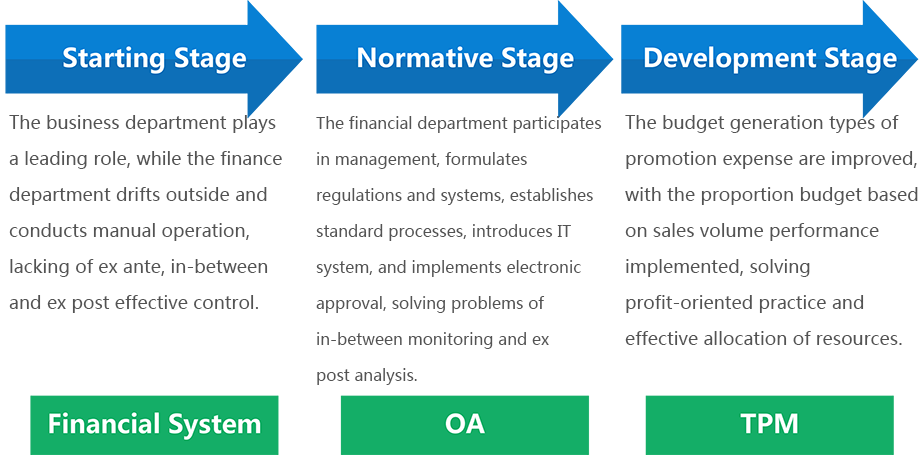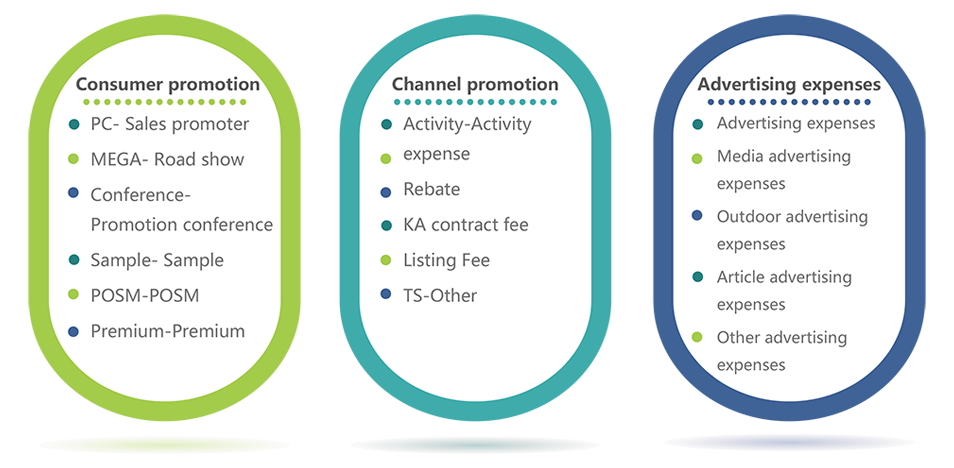| |
 |
Trade Promotion Management (TPM) |
The best trade promotion management solution in FMCG industry |
|
 |
Expense types include |
Trade spend, channel promotion and advertising expense. |
|
|
Three stages of FMCG industry in terms of expense management |
 |
|
Helping FMCG companies to solve the core problem: budget management and enforcement |
| Generally, marketing expenses account for 20% of sales. Thus, it will be a horrible matter if there is no system for management of such a huge amount of expenses. |
|
|
|
Overview of main TPM functions |
| • |
Budget management: According to area (department), or client, or project. |
| • |
Control budget: Flexible budget setting (the area is flexible). |
| • |
Application of activity plan: Applying plans according to product, or client, or project, essential activity information to support approval (estimated sales, cost-benefit ratio, single box expense). |
| • |
Closure of activity plan: Budget release; timely closure can promote more accurate withdrawal in advance and timely learn the project implementation condition (actual sales volume, actual cost-benefit ratio). |
| • |
Application of activity payment: it is possible to apply for reimbursement several times and speed up reimbursement; budget release; many payment mode: fund, debit from the account, debit from the bill, as well as free goods. |
| • |
Report form management: P&L; area, type, client and channel expense analysis, input-output analysis. |
| • |
Interface management: Automatic generation by certificates; automatic import of payment information; closed loop. |
|
|
Expense types under TMP management |
 |
|
Our Advantages |
| • |
Transparent and clear expense information can help users to learn the use condition of budget; |
| • |
Standard process control is convenient for users’ online monitoring; |
| • |
Strict budget control strategy ensures expenses are used within the budget scope; |
| • |
Management personnel can conveniently learn the use condition of budget via report form statistics function. |
|
|
|
|
|
